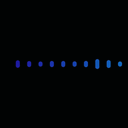Звукозапис, монтаж відео, програмування та Інтернет речей
ми навчаємо інженерів 90 років
Єдине місце в Україні, де можна стати справжнім Інженером-Акустиком та Фахівцем у галузі телебачення, кіновиробництва і звукотехніки
Інженер-Акустик? Мультимедіа-Інженер?
Акустику застосовують в різних галузях, таких як архітектура, промисловість, музичні заходи.
Фахівці з мультимедіа розробляють і обслуговують учасні телекомунікаційні системи і мережі, телекомунікаційні засоби,а також розробляють, впроваджують і використовують сучасну аудіо-та відеотехніку. Розробляють та керують системами і технічними засобами захисту інформації в телекомунікаційних системах;
Основним завданням інженера-акустика, незалежно від галузі, є забезпечення комфортного проведення часу слухачем в приміщеннях, де є звук. Інженери-акустики працюють над зниженням рівня шуму в житлових, комерційних або громадських приміщеннях. Працюють над впровадженням інноваційних технологій та нових матеріалів. Консультують будівельні компанії по забезпеченню оптимальної звукоізоляції, на промислових підприємствах інженери-акустики допомагають знизити рівень шуму та вібрації від машин що працюють.
Інженери-акустики вкрай потрібні у галузі медицини, вони безпосередньо розробляють та обслуговують складне медичне обладнання, таке як апарати ультразвукової діагностики.
А от сучасне телебачення не можливе без інженерів-телевізійників які займаються експлуатаційним і сервісним обслуговуванням аудіо- та відеотехнічної апаратури, знімають та монтують відео.
![[:uk]41178778_162907317952698_6338631204908172556_n-600×400[:]](http://ames.kpi.ua/wp-content/uploads/2018/11/41178778_162907317952698_6338631204908172556_n-600x400-600x400.jpg)
Основні плюси нашої кафедри
Акустика та мультимедіа дуже важлива в сучасному світі технологій та прогресу. Ні один фільм, ні одне свято, ні одна реклама, і ні одна пісня або аудіокнига не з’явилися на світ, якби не було такої важливої професії.
Міжнародна спеціальність – хороші інженери-акустики та інженери в галузі мультимедіа дуже потрібні за кордоном
Можливість навчання за кордоном – наша кафедра співпрацює з університетами Франції та Німеччини
Конкурентна заробітна плата в Україні – за даними rabota.ua, середній рівень заробітної плати інженерів-акустиків та інженерів з відеовиробнитства 21 500 грн.
ЧОМУ САМЕ АКУСТИКА, МУЛЬТИМЕДІА ТА ІНТЕРНЕТ РЕЧЕЙ?
Інженер-акустик працює над виконанням різних акустичних проектів, програмує, вирішує питання зі звукоізоляцією на будівельних об’єктах.
Мультимедіа-інженер проводить відеозйомку, відеомонтаж, працює з візуальними ефектами, програмую та працює з мережевими технологіями.
Інженери-акустики працюють в спеціалізованих компаніях, студіях звукозапису, концертних залах, кінотеатрах, в будівельній галузі.
Інженери мультимедіа працевлаштовані на підприємствах галузі телебачення та кіновиробництвах, телеканалах, телекомунікацій.
Нам допомагають: Акустична Камера
![[:uk]acous_lab[:]](https://ames.kpi.ua/wp-content/uploads/2018/12/acous_lab.jpg)
Акустична камера була побудована в 2010 році і в жовтні того ж року були проведені дослідження її акустичних властивостей. За результатами вимірювання, відповідно до методики Yoshimasa Electronic Inc, акустичні властивості камери визнані сприятливими для проведення лабораторних досліджень, прослуховування музики та мови.
Заглушена камера – приміщення для моделювання вільного простору, що необхідно при визначенні характеристик направленості джерел звуку та їх акустичної потужності.
В таких приміщеннях проводиться запис музичних інструментів та вокалу, а також можна проводити дослідження по визначенню ефективності шумозахисних екранів та інтерференційних і дифракційних явищ в акустиці.
Проект та внутрішнє оздоблення цієї камери виконано фірмою Департамент Акустики ООО «Українська компанія» ЛТД», за особистою участю директора Кошелева Дениса та випускника кафедри акустики та акустоелектроніки Молчанова Сергія. Ця компанія вже багато років займається виконанням робіт по створенню студій звукозапису та приміщень зі спеціальними акустичними характеристиками.
В акустичній камері проводяться:
- Вимірювання акустичних характеристик приміщення, рівня шуму що проникає, ступіня звукоізоляції огороджуючих конструкцій.
- Організація знімального, звукозаписуючого процесу.
- Консультації спеціалістів кафедри щодо акустичної корекції приміщеннь, звукоізоляції огороджуючих конструкцій, роботи з інженерним обладнанням;
